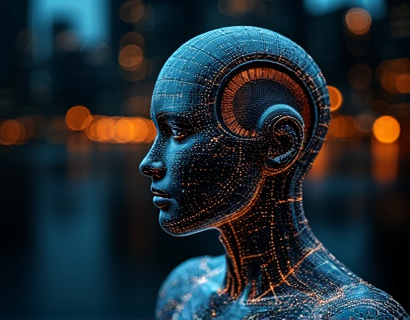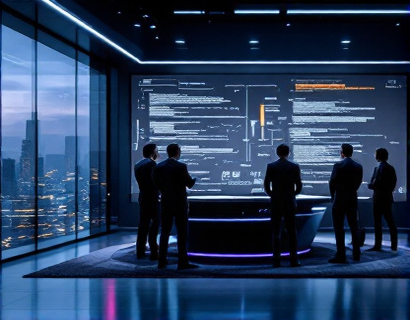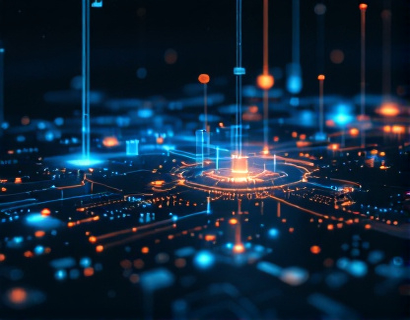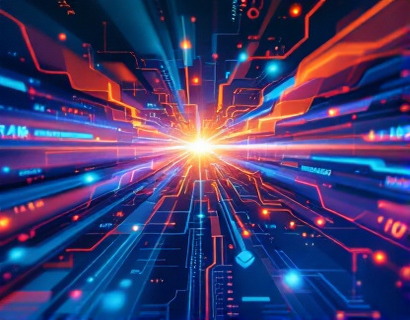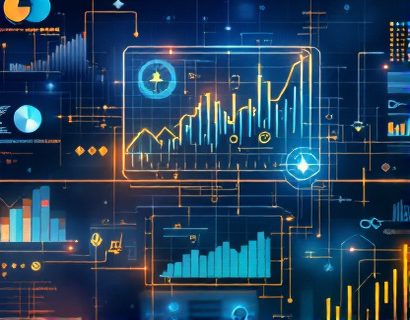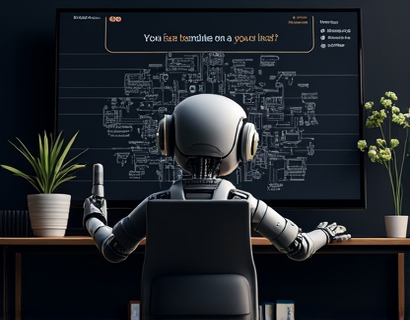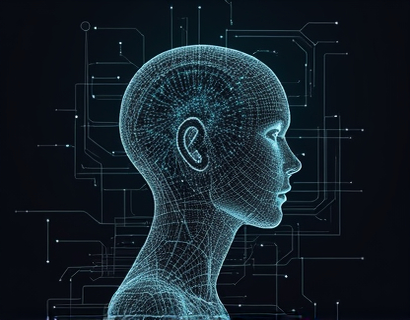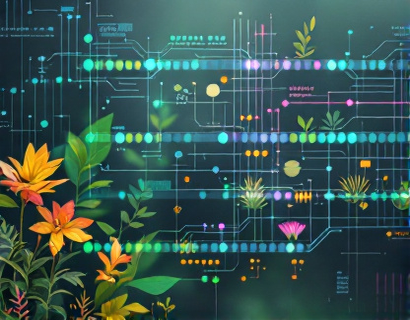AI-Powered Translation Technology: Revolutionizing Global Communication for Businesses and Individuals
In an increasingly globalized world, the ability to communicate effectively across languages has become a critical asset for both businesses and individuals. Traditional translation methods often fall short in terms of accuracy, speed, and cultural nuance, leading to misunderstandings and missed opportunities. The advent of AI-powered translation technology has transformed the landscape of global communication, offering precise, efficient, and culturally sensitive translations that bridge language gaps and foster seamless interactions. This article delves into the transformative impact of AI-powered translation tools, exploring how they are revolutionizing the way we connect and collaborate across diverse languages and cultures.
The Evolution of Translation Technology
The journey of translation technology has been marked by significant advancements, from manual translation by human experts to the automated systems of today. Early translation tools relied heavily on rule-based systems, which used predefined linguistic rules to translate text. However, these systems often struggled with the complexities of natural language, including idioms, colloquialisms, and context-dependent meanings. The introduction of statistical machine translation (SMT) in the early 2000s marked a significant improvement, leveraging large datasets to predict the most likely translations. Despite these advancements, SMT still faced challenges in maintaining context and handling rare or ambiguous terms.
The breakthrough came with the emergence of neural machine translation (NMT), powered by deep learning algorithms and neural networks. NMT models, such as sequence-to-sequence models and transformer-based architectures, have revolutionized translation by capturing intricate patterns and context in language. These models can learn from vast amounts of bilingual data, allowing them to generate more natural and accurate translations. The result is a significant leap forward in translation quality, making AI-powered translation tools indispensable for global communication.
Precision and Efficiency in AI Translation
One of the most compelling advantages of AI-powered translation technology is its unparalleled precision and efficiency. Traditional translation methods often require extensive human intervention to ensure accuracy, which can be time-consuming and costly. AI-driven translations, on the other hand, can process large volumes of text in real-time, providing immediate and accurate results. This efficiency is particularly beneficial for businesses that engage in frequent international communications, such as customer support, marketing, and contract negotiations.
Precision is another critical aspect where AI translation excels. Advanced NMT models are trained on massive datasets, enabling them to understand and translate complex sentences with high accuracy. These models can handle nuances such as idiomatic expressions, slang, and domain-specific terminology, ensuring that the translated text not only conveys the literal meaning but also the intended tone and context. For instance, in legal and medical translations, where precision is paramount, AI-powered tools can significantly reduce the risk of errors and misinterpretations.
Enhancing Business Interactions
For businesses operating in a global market, effective communication is crucial for success. AI-powered translation tools break down language barriers, enabling seamless interactions with international clients, partners, and employees. In the realm of customer service, AI translation can provide instant support in multiple languages, enhancing customer satisfaction and loyalty. For example, a multinational corporation can use AI translation to offer real-time chat support to customers in different regions, ensuring that language does not hinder the quality of service.
In the context of international marketing, AI translation helps brands reach a broader audience by accurately translating content into multiple languages. This not only expands the reach of marketing campaigns but also ensures that the message resonates with local audiences. AI-powered tools can adapt content to cultural nuances, avoiding missteps that could arise from literal translations. For instance, a global fashion brand can use AI translation to tailor its promotional materials to different markets, maintaining the brand's voice while respecting local customs and preferences.
In business negotiations, clear and accurate communication is essential. AI translation tools can provide real-time translation during video conferences and written communications, ensuring that all parties understand each other without delays. This capability is particularly valuable in high-stakes negotiations, where every word counts. By removing language barriers, AI translation facilitates more effective collaboration and decision-making, ultimately leading to better business outcomes.
Transforming Personal Communication
Beyond the business realm, AI-powered translation technology has a profound impact on personal communication. Travelers, expatriates, and individuals learning new languages can benefit immensely from these tools. Language learning apps and translation services powered by AI can provide instant translations, helping users navigate foreign environments and engage with local communities. For travelers, real-time translation of signs, menus, and conversations can enhance the travel experience, making it more enjoyable and less stressful.
For individuals learning a new language, AI translation tools serve as valuable learning aids. These tools can offer instant feedback on spoken and written translations, helping learners improve their language skills more efficiently. Language exchange platforms can also leverage AI translation to connect speakers of different languages, fostering cultural exchange and mutual understanding. The accessibility of AI translation empowers more people to communicate across languages, breaking down barriers and fostering global connections.
Challenges and Limitations
Despite the numerous advantages, AI-powered translation technology is not without its challenges and limitations. One of the primary concerns is the accuracy of translations in low-resource languages, which have limited training data. While major languages like English, Mandarin, and Spanish benefit from extensive datasets, lesser-known languages may struggle with precision. However, ongoing research and the development of transfer learning techniques are addressing these gaps, gradually improving translation quality across all languages.
Another challenge is the preservation of cultural nuances and context. While AI models have made significant strides in understanding context, certain subtleties may still be lost in translation. For example, humor, sarcasm, and cultural references can be particularly difficult to translate accurately. To mitigate this, combining AI translation with human oversight can ensure that the nuances are preserved, especially in critical communications.
Privacy and security are also important considerations. As sensitive information is often translated, ensuring the confidentiality and integrity of the data is paramount. Reputable AI translation providers implement robust security measures, such as end-to-end encryption and compliance with data protection regulations, to safeguard user information.
Future Prospects
The future of AI-powered translation technology is promising, with ongoing advancements poised to address current limitations and open new possibilities. One area of focus is the development of multilingual models that can handle multiple languages simultaneously, further enhancing the efficiency and versatility of translation tools. These models can leverage shared representations across languages, improving performance in low-resource scenarios.
Another exciting development is the integration of AI translation with other technologies, such as augmented reality (AR) and virtual reality (VR). AR and VR applications can use real-time translation to create immersive, language-agnostic experiences, revolutionizing fields like tourism, education, and remote collaboration. For instance, travelers can use AR to translate signs and menus in real-time, enhancing their exploration of foreign destinations.
Additionally, the rise of conversational AI, including chatbots and virtual assistants, is set to transform how we interact with translation tools. These AI entities can provide continuous, context-aware translation in natural language conversations, making communication seamless and intuitive. As these technologies mature, we can expect a future where language barriers are virtually nonexistent, fostering a more connected and understanding global community.
Conclusion
AI-powered translation technology has emerged as a game-changer in the realm of global communication, offering precise, efficient, and culturally sensitive translations that bridge language gaps. For businesses and individuals alike, these tools break down barriers, enhance interactions, and open up new opportunities. While challenges remain, the continuous evolution of AI translation promises a future where communication knows no linguistic bounds. Embracing these advancements can significantly elevate the way we connect and collaborate across languages and cultures, paving the way for a more interconnected world.




